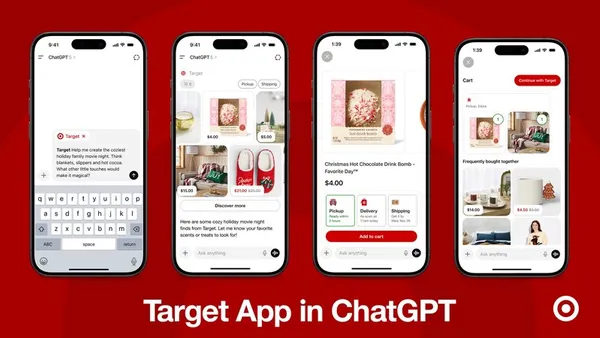Dive Brief:
- In 2018, 20% of firms will use artificial intelligence (AI) to make business decisions as well as offer customer service and sales support through automated communications, according to a new report from Forrester, "Predictions 2018: Blended AI Will Disrupt Your Customer Service And Sales Strategy."
- Predictions include that AI will increasingly be used for visual-based technologies like image detection and facial expression analysis with an eye toward improving sales and service outcomes. Additionally, chatbots and chat will increasingly compete with email in customer service strategies. Companies like Nike, Apple, Uber, Toys 'R' Us and Target have already moved away from actively supporting email for customer service, per Forrester.
- As companies push more customers toward chatbots, customer and agent satisfaction will drop.
Dive Insight:
The future of AI promises marketers predictive analytics and automated ad creative, but AI is still in its “toddler” phase and not a set-it-and-forget-it technology right now. Forrester expects companies to operationalize AI next year through “blended AI,” which means using the technology to augment sales and customer service functions through chatbots and other automated communications. Some companies are looking to decrease call volume by more than 50% in under two years through blended AI technology, per Forrester.
A challenge in using blended AI for customer service is that the customer satisfaction level will drop if chatbots, self-service and chat aren’t optimized to effectively engage customers. For example, agents could become dissatisfied — translating to lower customer service satisfaction — with the added tasks related to tagging phrases to aid machine learning for AI.
Some might argue that Forrester's predictions undersell the AI capabilities already in the marketplace for marketers and advertisers. A number of big tech companies like IBM and Salesforce have AI products that are helping marketers with high-level data parsing and are using machine learning to optimize customer interactions, messaging and campaign. But the forecast does make a salient point that a blended AI approach to sales and customer service is the easiest way most companies can implement AI as the technology catches up to some of the loftier expectations.
Last year Forrester released its “State of Chatbots” report that echoed the same issues from this year’s blended AI prediction in that limited chatbots with poor user experiences actually disappointed consumers. The lesson would remain that AI can be used in consumer communications, but marketers should ensure the technology is actually helpful and not just being deployed because of the wow-factor in automating customer service.












